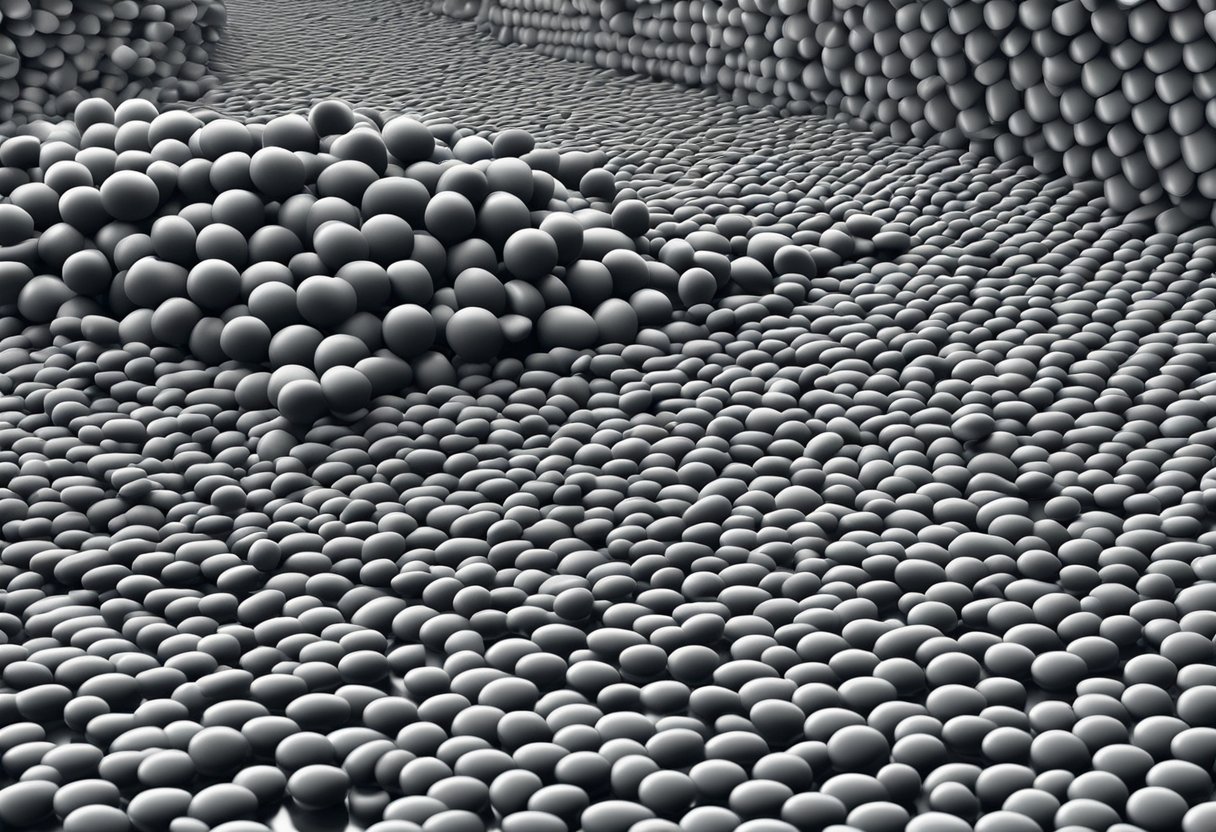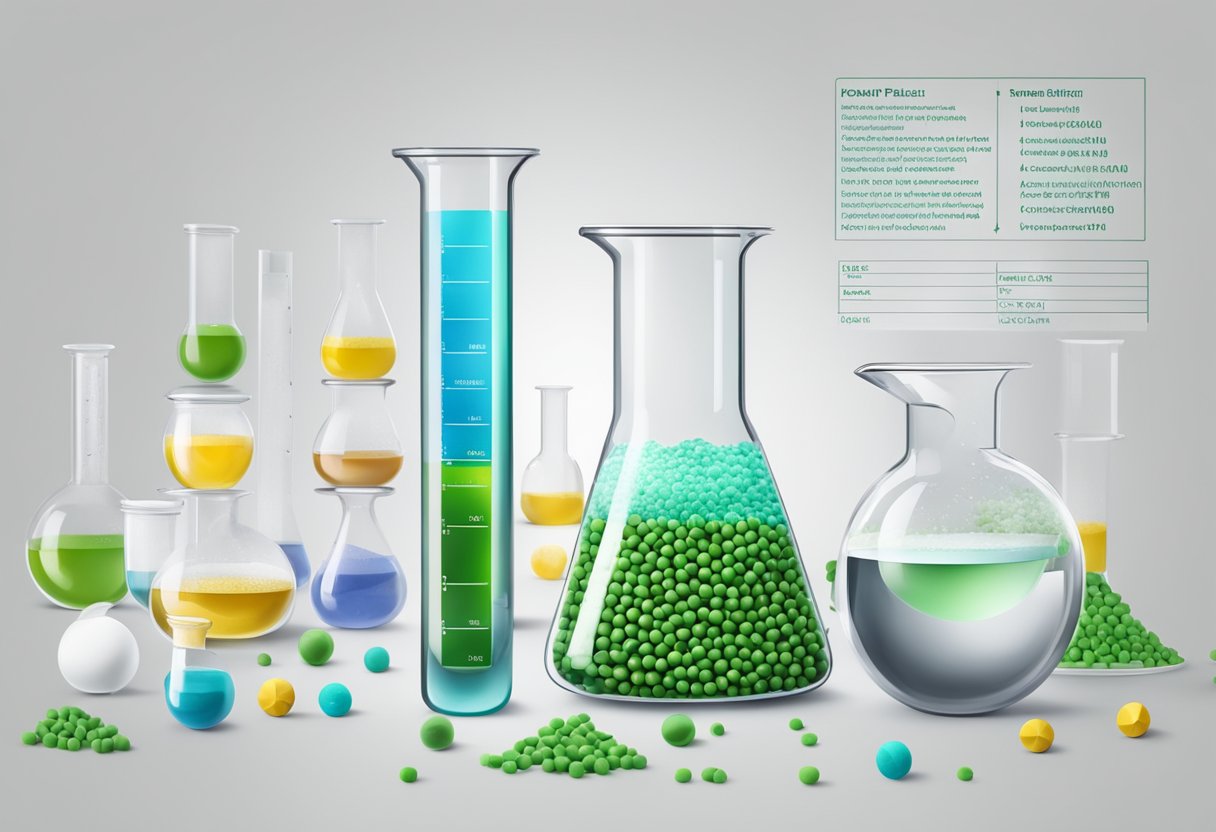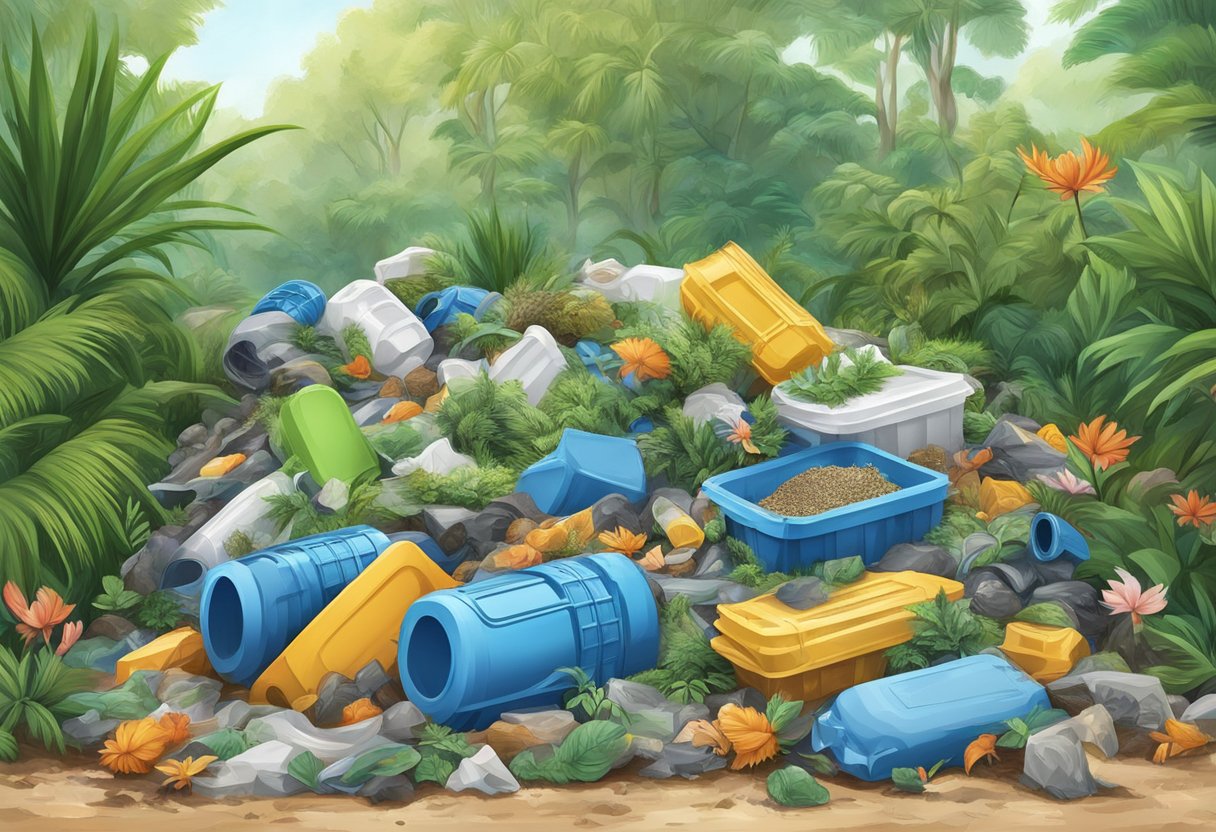PLA PBAT Plastic: The Environmentally Friendly Alternative to Traditional Plastics
19/01/2024
PLA PBAT plastic is a relatively new type of biodegradable plastic that has garnered attention as an eco-friendly alternative to traditional plastics. PLA PBAT plastic is made from a combination of polylactic acid (PLA) and polybutylene adipate terephthalate (PBAT), which are both derived from renewable resources, such as corn starch and sugarcane. This unique combination of materials results in a plastic that can break down naturally in the environment without leaving harmful residue.

One of the main advantages of PLA PBAT plastic is its ability to decompose in a relatively short amount of time. Unlike traditional plastics, which can take hundreds of years to break down, PLA PBAT plastic can decompose in as little as 180 days under the right conditions. This makes it an attractive option for businesses and consumers who are looking for ways to reduce their environmental impact. Additionally, PLA PBAT plastic does not release harmful chemicals when it decomposes, making Zinc oxide it a safer option for the environment and wildlife.
Overview of PLA PBAT Plastic

PLA PBAT plastic is a biodegradable and compostable material that has gained popularity in recent years due to its eco-friendliness. PLA PBAT plastic is made from a blend of polylactic acid (PLA) and polybutylene adipate terephthalate (PBAT) and is known for its ability to biodegrade in a relatively short period of time.
PLA PBAT plastic is a versatile material that can be used in a variety of applications, including packaging, disposable cutlery, and food service items. It is also commonly used in 3D printing due to its ease of use and biodegradability.
One of the key benefits of PLA PBAT plastic is its biodegradability. When exposed to the right conditions, such as heat, moisture, and microorganisms, PLA PBAT plastic can break down into its natural components, which can then be absorbed by the environment without causing harm. This makes it a more sustainable alternative to traditional plastics, which can take hundreds of years to decompose.
In addition to its eco-friendliness, PLA PBAT plastic also offers good mechanical properties, such as strength and durability. It can also be easily colored and printed on, making it a popular choice for branding and marketing purposes.
Overall, PLA PBAT plastic is a promising material that offers a sustainable and eco-friendly alternative to traditional plastics. As more companies and consumers become aware of its benefits, its use is likely to continue to grow in the coming years.
Chemical Composition

Polylactic Acid (PLA) Components
Polylactic acid (PLA) is a biodegradable thermoplastic aliphatic polyester that is derived from renewable resources such as corn starch, tapioca roots, or sugarcane. PLA is made up of lactic acid monomers, which can be produced by the fermentation of starches or sugars. The polymerization of lactic acid monomers results in the formation of a long chain polymer, which is then used to produce PLA plastic.
PLA has a high melting point of around 150°C and is known for its good mechanical properties, such as high tensile strength, stiffness, and impact resistance. It is also transparent and has good barrier properties against gases, water, and oils.
Polybutylene Adipate Terephthalate (PBAT) Properties
Polybutylene adipate terephthalate (PBAT) is a biodegradable aliphatic-aromatic copolyester that is made up of four different monomers: adipic acid, terephthalic acid, 1,4-butanediol, and 1,4-butanediol. The copolymerization of these monomers results in a material that has good mechanical properties and is biodegradable.
PBAT has a lower melting point than PLA, around 120°C, and is known for its flexibility, toughness, and good elongation at break. PBAT is also transparent and has good barrier properties against gases, water, and oils.
In summary, PLA and PBAT are two biodegradable plastics that are commonly used in the production of sustainable packaging materials. PLA is made up of lactic acid monomers, while PBAT is a copolyester made up of four different monomers. Both materials have good mechanical properties and are transparent with good barrier properties.
Biodegradability and Environmental Impact

Biodegradation Process
PLA PBAT plastics are biodegradable and can be broken down by microorganisms in the environment. The biodegradation process occurs in several stages, starting with the hydrolysis of the polymer chains into smaller fragments. These fragments are then consumed by microorganisms, which break them down further into carbon dioxide, water, and other natural compounds. The rate of biodegradation depends on various factors, such as temperature, humidity, and the presence of microorganisms.
Comparison with Conventional Plastics
Compared to conventional plastics, PLA PBAT plastics have a lower environmental impact. Conventional plastics take hundreds of years to decompose and can release harmful chemicals into the environment. In contrast, PLA PBAT plastics can biodegrade within a few months to a few years, depending on the conditions. Additionally, PLA PBAT plastics are made from renewable resources, such as corn starch and sugarcane, which reduces the reliance on fossil fuels.
Life Cycle Assessment
A life cycle assessment (LCA) is a tool used to evaluate the environmental impact of a product throughout its entire life cycle. According to LCAs, PLA PBAT plastics have a lower carbon footprint compared to conventional plastics. This is due to the fact that PLA PBAT plastics require less energy to produce and emit fewer greenhouse gases during production. Additionally, the biodegradation of PLA PBAT plastics does not release harmful chemicals into the environment.
In conclusion, PLA PBAT plastics offer a more sustainable alternative to conventional plastics. They are biodegradable, made from renewable resources, and have a lower environmental impact. However, it is important to note that proper disposal and management of PLA PBAT plastics is still necessary to ensure their full environmental benefits.
Physical and Mechanical Properties
PLA PBAT plastic is a biodegradable material that possesses several physical and mechanical properties that make it an attractive alternative to traditional plastics. Here are some of its notable properties:
- Density: The density of PLA PBAT plastic is around 1.2 g/cm³, which is similar to that of traditional plastics such as polyethylene and polypropylene.
- Melting Point: The melting point of PLA PBAT plastic is around 130-140°C, which is lower than that of traditional plastics. This means that it can be easily processed using low-temperature methods such as injection molding and extrusion.
- Tensile Strength: PLA PBAT plastic has a tensile strength of around 40-60 MPa, which is comparable to that of traditional plastics. This means that it can withstand moderate stresses without breaking.
- Flexural Strength: The flexural strength of PLA PBAT plastic is around 70-100 MPa, which is also comparable to that of traditional plastics. This means that it can withstand bending forces without breaking.
- Elongation at Break: PLA PBAT plastic has an elongation at break of around 5-10%, which is lower than that of traditional plastics. This means that it is less ductile and more brittle.
- Water Absorption: PLA PBAT plastic has a low water absorption rate, which makes it suitable for use in wet environments.
Overall, PLA PBAT plastic is a versatile material that possesses several physical and mechanical properties that make it a promising alternative to traditional plastics. Its low melting point and high strength make it easy to process and suitable for a wide range of applications.
Applications and Uses
Packaging Industry
PLA PBAT plastic is becoming increasingly popular in the packaging industry due to its biodegradability and compostability. It is used in the production of various products such as bags, food containers, and packaging films. PLA PBAT plastic has the potential to replace traditional petroleum-based plastics, which take hundreds of years to decompose. The use of PLA PBAT plastic in the packaging industry is a step towards a more sustainable future.
Agricultural Applications
PLA PBAT plastic is also used in the agricultural industry. It is used to produce mulch films, which are used to cover the soil around plants to prevent weed growth, retain moisture, and regulate soil temperature. The mulch films made of PLA PBAT plastic are biodegradable and compostable, making them an eco-friendly alternative to traditional petroleum-based mulch films. The use of PLA PBAT plastic in the agricultural industry is a step towards more sustainable farming practices.
Biomedical Field
PLA PBAT plastic is also used in the biomedical field. It is used to produce surgical sutures, drug delivery systems, and tissue engineering scaffolds. PLA PBAT plastic is biocompatible, meaning it does not cause any adverse reactions when it comes into contact with living tissue. It is also biodegradable, which means that it can be safely absorbed by the body over time. The use of PLA PBAT plastic in the biomedical field is a step towards more sustainable and biocompatible medical devices.
In conclusion, PLA PBAT plastic has a wide range of applications and uses, from the packaging industry to the biomedical field. Its biodegradability and compostability make it an eco-friendly alternative to traditional petroleum-based plastics. The use of PLA PBAT plastic is a step towards a more sustainable future.
Production Processes
Extrusion Methods
Extrusion is a common method for manufacturing PLA PBAT plastic. This process involves melting the plastic pellets and pushing them through a die to create a specific shape or form. PLA PBAT plastic can be extruded into a wide range of shapes, including sheets, films, and fibers. The extrusion process can be divided into several stages, including feeding, melting, pumping, and shaping.
During the feeding stage, the plastic pellets are fed into the extruder. The pellets are then heated and melted in the barrel of the extruder. Once the plastic is melted, it is pumped through the die and shaped into the desired form. The extruded plastic is then cooled and solidified to create a finished product.
Blending Techniques
Blending is another important process used in the production of PLA PBAT plastic. This process involves mixing two or more polymers together to create a new material with specific properties. Blending can be done in several ways, including melt blending, solution blending, and solid-state blending.
Melt blending is the most common method for blending PLA PBAT plastic. This process involves melting the two polymers together in an extruder and mixing them thoroughly. The resulting blend is then cooled and solidified to create a new material with unique properties.
Solution blending involves dissolving the polymers in a solvent and then mixing them together. The solvent is then removed, leaving behind a blend of the two polymers. Solid-state blending involves mixing the two polymers together in a solid state, such as by grinding them together.
Overall, the production processes used for PLA PBAT plastic involve extrusion and blending techniques, which can be customized to create a range of different shapes and properties.
Market Trends and Economic Aspects
The demand for eco-friendly products has been increasing in recent years, and PLA PBAT plastic is no exception. This biodegradable plastic is made from renewable resources, making it an attractive option for environmentally conscious consumers. As a result, the market for PLA PBAT plastic is expected to grow significantly in the coming years.
According to a report by MarketsandMarkets, the global market for biodegradable plastics is projected to reach $6.12 billion by 2023, with PLA PBAT plastics being one of the key drivers of this growth. The report cites the increasing demand for sustainable packaging as one of the main factors driving the market.
In addition to its environmental benefits, PLA PBAT plastics also offers economic advantages. The production of this plastic requires less energy than traditional plastics, which can result in lower production costs. Furthermore, as the demand for eco-friendly products continues to grow, companies that offer PLA PBAT plastics packaging may be able to charge a premium for their products.
Overall, the market trends and economic aspects of PLA PBAT plastics are promising. As consumers become more environmentally conscious and demand for sustainable products increases, the market for this biodegradable plastic is expected to grow. Additionally, the economic benefits of producing and using PLA PBAT plastics make it an attractive option for companies looking to reduce their environmental impact while also improving their bottom line.
Regulatory Framework and Standards
PLA PBAT plastic is regulated by various governmental and non-governmental organizations to ensure its safety and environmental sustainability. The regulatory framework for PLA PBAT plastics varies from country to country.
In the United States, PLA PBAT plastic is regulated by the Food and Drug Administration (FDA) for use in food packaging and containers. The FDA has established regulations and guidelines for the use of PLA PBAT plastics in food contact applications, including the types and levels of additives that can be used.
In Europe, the European Food Safety Authority (EFSA) regulates the use of PLA PBAT plastics in food contact materials. The EFSA has established specific migration limits for PLA PBAT plastics, which must not be exceeded in order to ensure the safety of the food in contact with the material.
In addition to governmental regulations, PLA PBAT plastic is also subject to various industry standards. The ASTM International, for example, has established standards for the testing and performance of PLA PBAT plastics, including its biodegradability and compostability.
Overall, the regulatory framework and standards for PLA PBAT plastics are designed to ensure its safety and environmental sustainability. By complying with these regulations and standards, manufacturers can ensure that their products are safe for use and do not harm the environment.
Innovations and Future Prospects
Recent Technological Advancements
In recent years, there have been several technological advancements in the production and processing of PLA PBAT plastics. One notable development is the use of nanoclay as a filler material to enhance the mechanical properties of the plastic. This has led to the production of PLA PBAT composites with improved strength, stiffness, and thermal stability.
Another innovation is the use of biodegradable additives to accelerate the degradation of PLA PBAT plastics. These additives can be incorporated into the plastic during the manufacturing process to make it more environmentally friendly. Additionally, the use of 3D printing technology has opened up new possibilities for the production of complex shapes and structures using PLA PBAT plastics.
Potential Growth Areas
The future prospects for PLA PBAT plastics look promising, with several potential growth areas on the horizon. One such area is the development of new applications for the plastic, such as in the automotive and construction industries. As the demand for sustainable materials continues to grow, PLA PBAT plastics could become a viable alternative to traditional plastics in these industries.
Another potential growth area is the expansion of PLA PBAT plastics production capacity. As more companies invest in the production of biodegradable plastics, the cost of production is expected to decrease, making PLA PBAT plastics more accessible to a wider range of industries.
Overall, the innovations and future prospects for PLA PBAT plastics are exciting and promising. With continued research and development, this biodegradable plastic has the potential to become a key player in the sustainable materials industry.




